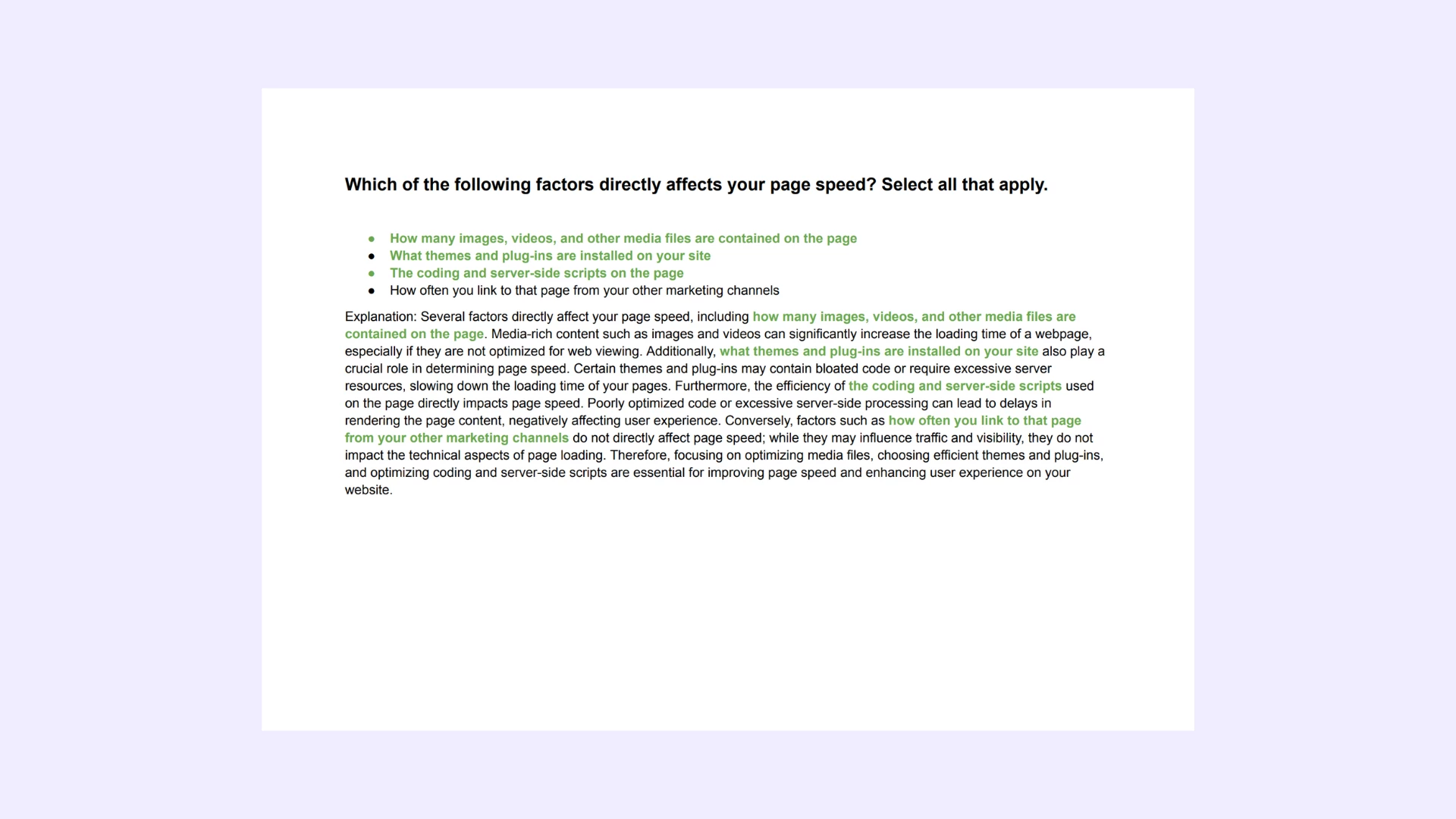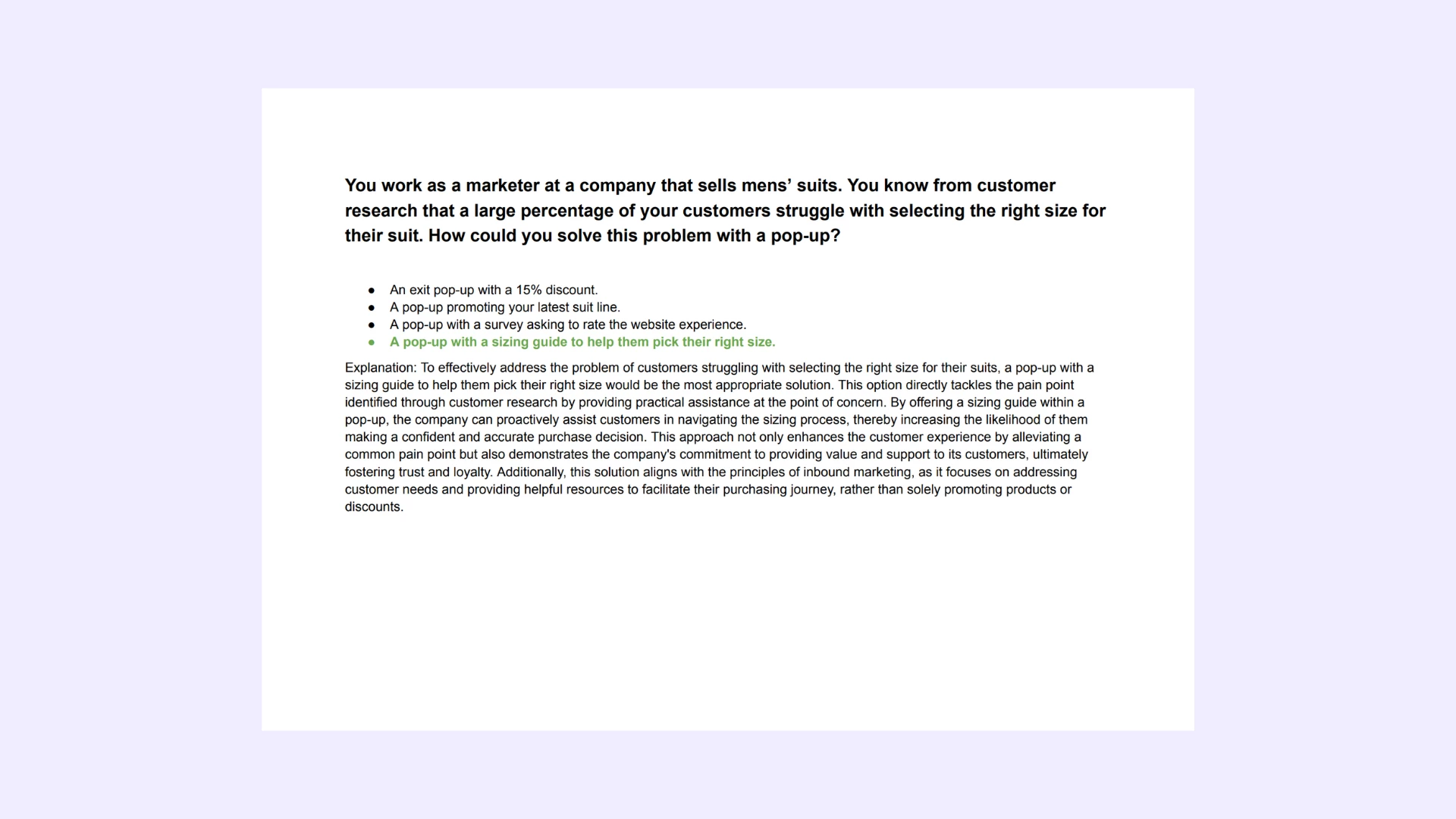Which of the following is NOT a way to keep your access token safe?
Rotate your access tokens every six months
Store access tokens in an .env file
Keep your access tokens in a GitHub repository
Routinely check call logs for any suspicious activity

HubSpot Roll. Includes Answers for Every Real HubSpot Certification Exam.
All-in-One: Get all HubSpot exams answers with explanations in one bundle. This package includes answers for every current HubSpot certification. Regular updates to reflect the latest exam version. -> See what's included.


Need a single cerification exam answers? Check out our -> list of certification exams answer keys. Learn Smarter. Obtain or Renew your certificates with peace of mind!
Explanation: Which of the following is NOT a way to keep your access token safe?
Explanation: The selected answer, " correct: trueKeep your access tokens in a GitHub repository," is correct because storing access tokens in a public or even private GitHub repository poses a significant security risk. Access tokens are sensitive pieces of information that grant access to resources or services, and exposing them in a version-controlled repository, such as GitHub, makes them vulnerable to unauthorized access or exploitation by malicious actors. GitHub repositories are often subject to scrutiny by automated bots or attackers scanning for sensitive information, including access tokens, which, if leaked, can lead to unauthorized access to the associated accounts or resources. Therefore, keeping access tokens in a GitHub repository violates basic security principles and increases the likelihood of a security breach. In contrast, rotating access tokens regularly, storing them securely in environment variables (e.g., .env files), and monitoring call logs for suspicious activity are all valid practices for safeguarding access tokens and maintaining the security of API integrations. Rotating access tokens periodically helps mitigate the impact of potential token leaks, storing tokens in environment variables reduces the risk of accidental exposure, and routinely monitoring call logs allows for the detection of unauthorized access or unusual behavior, contributing to overall access token security. Therefore, avoiding storing access tokens in GitHub repositories is crucial for preventing security incidents and ensuring the confidentiality and integrity of sensitive authentication credentials.

Special Bundle Offer HubSpot Roll. All in One
Note: We conduct daily checks for updates on the exam, ensuring that the file contains the most recent questions from the actual certification program.
Questions | Answers | Explanations. FREE Updates.
You may also be interested:
- Special HubSpot bundle offer - all HubSpot exams in one
- HubSpot CMS for develpers certification exam answers
- HubSpot CMS for develpers II certification exam answers
- HubSpot content hub for marketers certification exam answers
- HubSpot content marketing certification exam answers
- HubSpot contextual marketing certification exam answers
- HubSpot digital advertising certification exam answers
- HubSpot digital marketing certification exam answers
- HubSpot email marketing certification exam answers
- HubSpot frictionless sales certification exam answers
- HubSpot growth driven design certification exam answers
- HubSpot inbound certification exam answers
- HubSpot inbound marketing certification exam answers
- HubSpot inbound marketing optimization certification exam answers
- HubSpot inbound sales certification exam answers
- HubSpot integrating with HubSpot I foundations certification exam answers
- HubSpot marketing hub software certification exam answers
- HubSpot reporting certification exam answers
- HubSpot revenue operations certification exam answers
- HubSpot sales enablement certification exam answers
- HubSpot sales hub software certification exam answers
- HubSpot sales management certification exam answers
- HubSpot sales software certification exam answers
- HubSpot seo certification exam answers
- HubSpot seo II certification exam answers
- HubSpot service hub software certification exam answers
- HubSpot social media marketing certification exam answers
- HubSpot social media marketing II certification exam answers